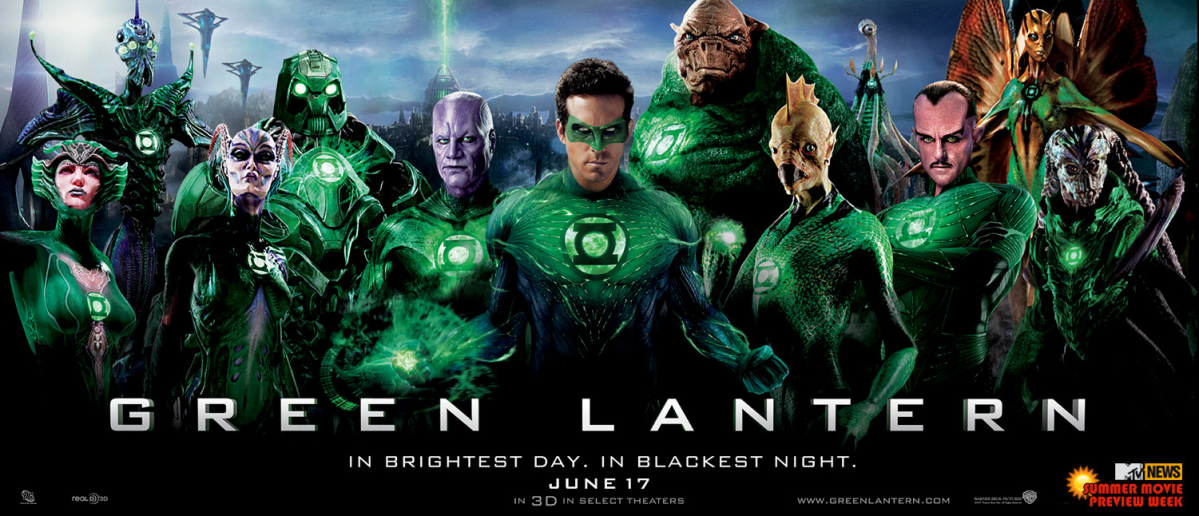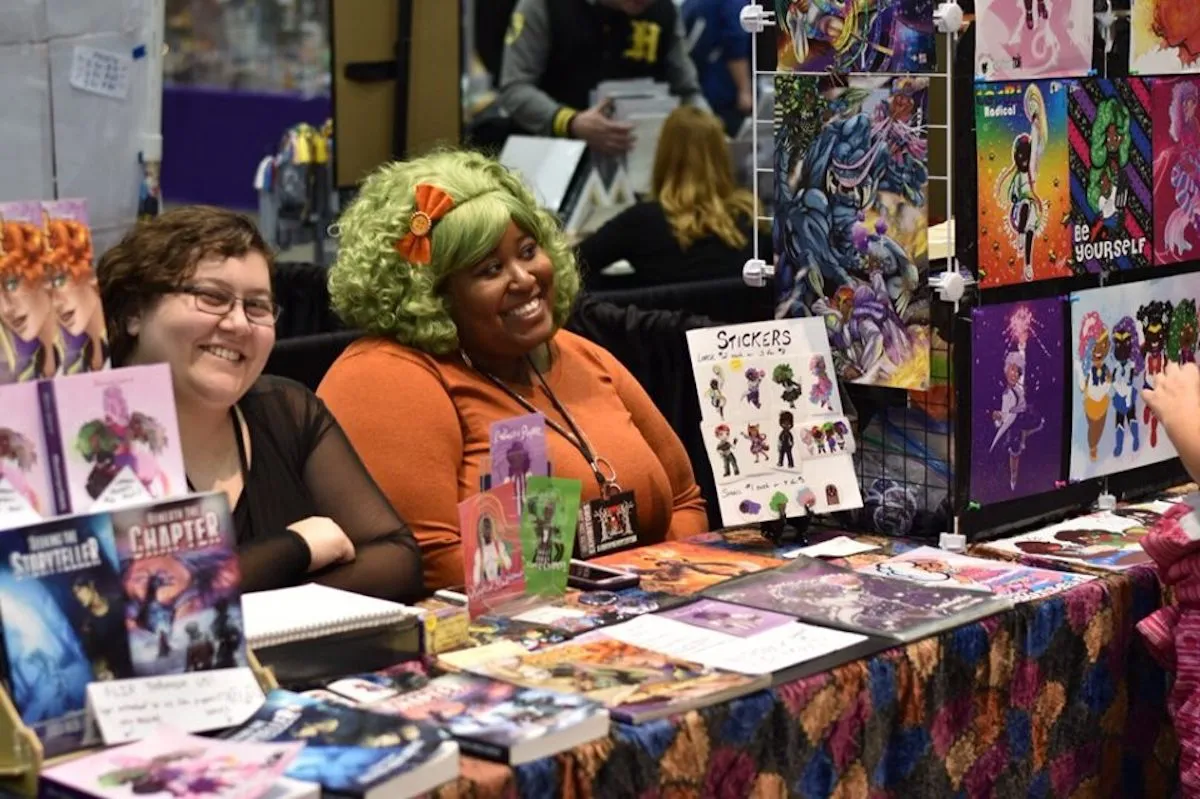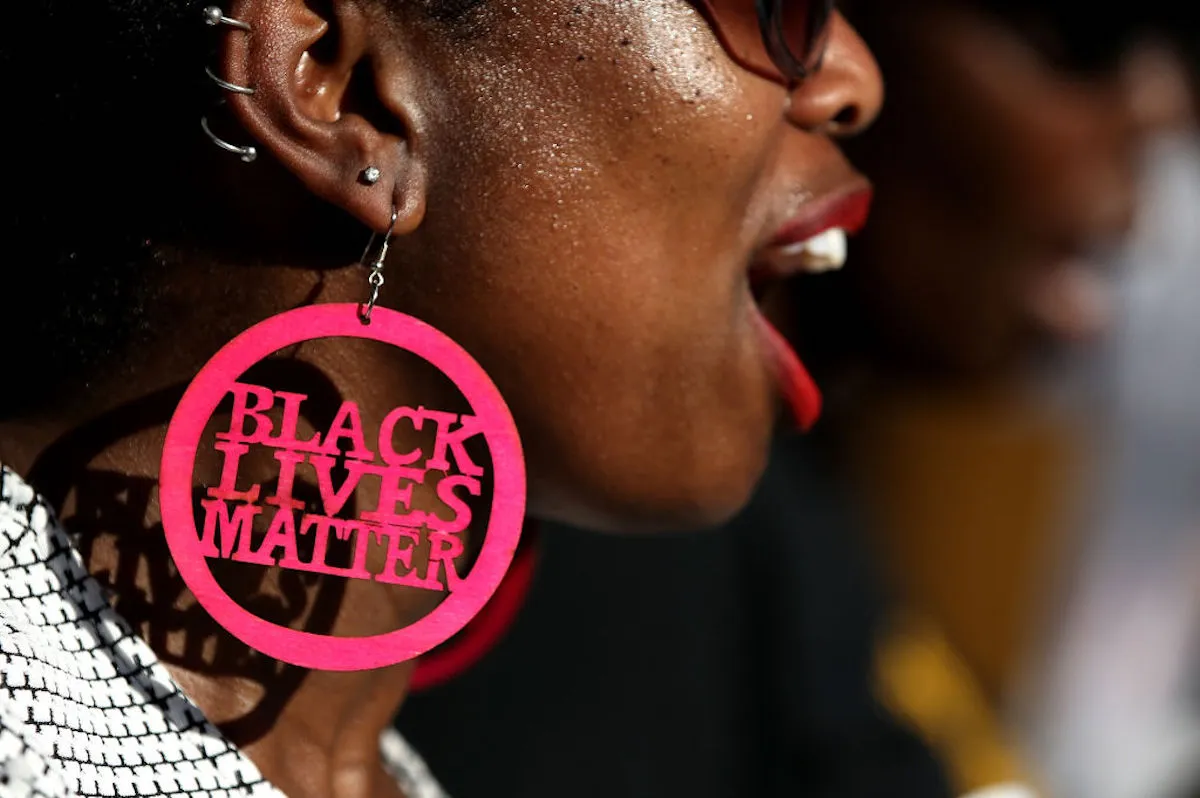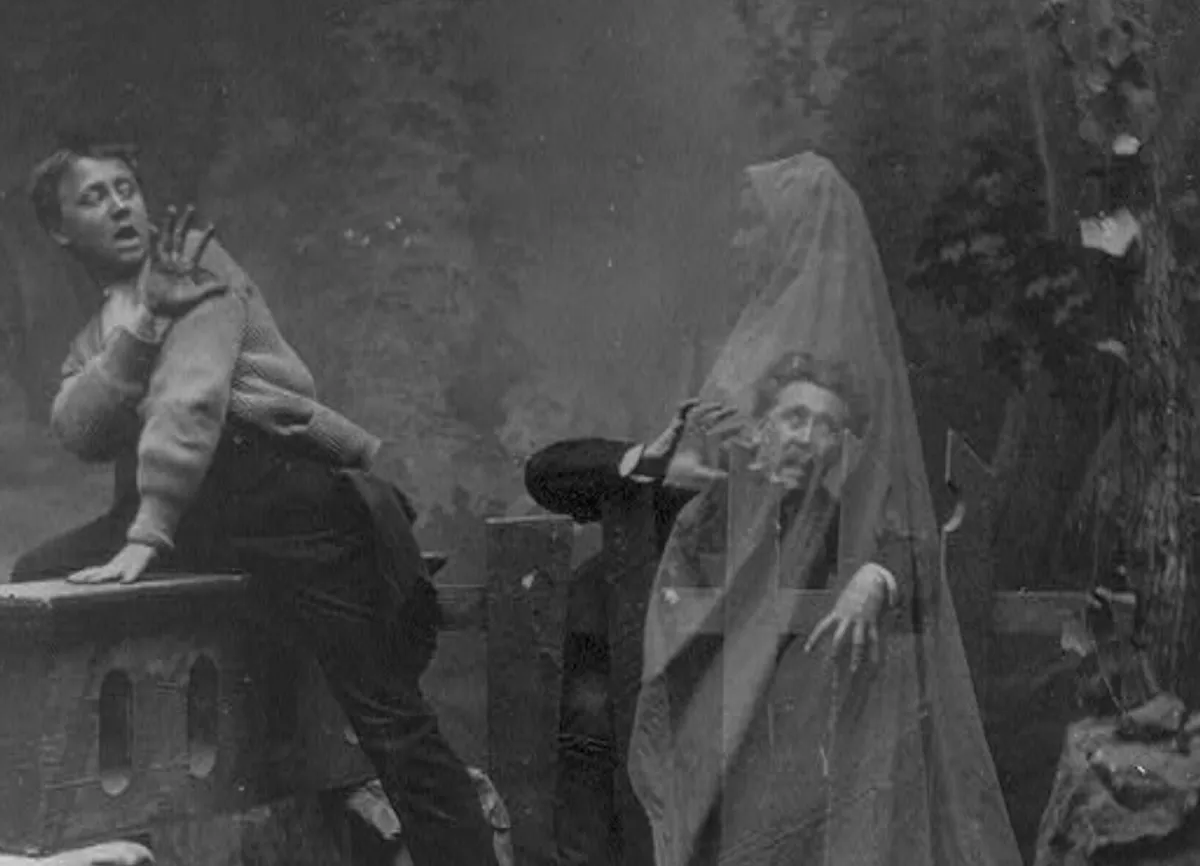Big screen comic adaptations have grown darker and darker in the last 10 years, covering the Cuban Missile Crisis, parental abandonment and betrayal, the ethics of justified killing, threatened genocide, and allegories for contemporary terrorism, to name a few recent plots. So it’s something of a coup to see that DC has pushed up a summer tentpole undeniably for kids, one without the heft of the adult themes we’ve grown accustomed to from the Big Two. A movie whose uncomplicated trajectory and absolutist morality spell easy fun for the whole family. You know; Green Lantern.
But wait, you say, power rings at the ready to land nasty critics a glowing-green left hook. Green Lantern isn’t for kids! It’s a Gold (and Silver) Age classic about a noble corp of intergalactic soldiers dedicated to fighting evil! One could easily make the mistake of assuming Green Lantern is aimed at the 8-14 set. Who else but the 10-year-olds I saw outside the cinema could be taken in by the color-coded fight between shining, noble Will and festering, (literally) soul-sucking Fear? We know that these are the battle lines that exist because we’re told so, in a lengthy expository voice-over that, fast as it can, lays down enough foundation to build a CG-solar system on. Once upon a time, in a galaxy just a wormhole away, there was a Big Bad Guy, who was stopped by 3,600 really good guys there for the purpose. Unfortunately, they were mighty in numbers, but didn’t believe in alarm systems or guard duty, and three random aliens with the space equivalent of a flat tire stumbling onto the holding cell of the Greatest Evil the Universe Has Known was enough to unleash it once again.
Our hero pops up soon enough, one Hal Jordan (Ryan Reynolds), charming but commitment-phobic test fighter pilot, serial dater, and thoroughly decent uncle. (Hal nearly gets himself killed at work while re-living the painful death of his own father, then makes sure to show up to his nephew’s birthday party the same day. What a lout!) When the Lantern Corps’ top fighter is fatally wounded in a battle with the re-emergent arch-nemesis, he crash lands on our green world, and the ring chooses Hal to carry on his legacy. After one of the film’s funnier scenes, in which Hal struggles with the fact that the lantern and ring don’t come with an instruction manual, he is zipped off to Lantern HQ to get suited up. Here he must undergo what every hero has before him; being told what’s what by the CG equivalent of a dry-humored British tutor, getting trounced by the CG equivalent of a “big Black guy” trainer, and, finally, having his spirit crushed by a doubting British team leader (the criminally underused Mark Strong). It turns out, the ring, the skintight suit, and the silly green mask are all powered by Will, a strength a Lantern must build if he/she/amorphous sentient gas pocket, is to fight to full potential. Imagination is required to come up with a myriad of things for the ring to form, and imagination is something humans lack according to the film, along with courage, i.e. the ability to not crap our spacesuits when all-consuming evil descends on our home planet. Also included in the ring’s power package are, apparently, the abilities to woo icy ex-girlfriends and make compelling speeches to assemblies of immortal aliens. (No word on how Reynolds stays in shape, though.)
This is all too much for Hal, who quits after approximately twenty minutes of training, citing his own jerkishness, incompetence, and a couple other things to put off his inevitable heroism for a dramatic act longer. Hal’s reluctance to become, in his words, “a green space cop” is a case of the lad protesting a little too much, a fact his (near-nameless) scientist friend, and his boring love interest are more than willing to call him out on. His reticence is supposed to communicate depth and humanity, which is more than can be said for virtually every other figure who appears on screen, from his fellow fabricated Lanterns to Tim Robbins‘ smarmy Senator Hammond, to Hammond’s son, Hector, the herald of coming doom who turns out to be nothing but a red herring. Played by a near-unrecognizable Peter Sarsgaard, Hector is blameless enough to begin with, a creepy, but essentially harmless, xenobiologist who turns evil when infected by goo from the Supreme Evil stowed away in the dead body of Hal’s predecessor. Once his transformation takes hold, he develops a grotesque, bloated head, stops showering, and giggles in a manic fashion. With his newly discovered telekinesis and mnemonic absorption, Hector does what he’s expected to do, getting right to menacing the hero, offing Senator Dad, and kidnapping the hero’s girlfriend. Said girlfriend, Blake Lively, failing to make any leap from her small-screen Gossip Girl fame, dutifully smiles and laughs like she’s on a first date with the entire audience and we keep making bad jokes. Despite being shown as a competent fighter pilot in an early scene, her character falls somewhere between Mary Jane Watson and Dr. Jane Foster on the superhero movie scale of Earnestly Blank Female Leads. She’s neither offensive, nor particularly interesting, a description that could apply to the entire film.
Green Lantern does disservice to its more promising elements by enacting one of the same mistakes George Lucas made with the new Star Wars trilogy (among many, many other mistakes). The script takes something unabashedly cool — a trained group of fighters for good with abilities that should aid our hero on his quest — and, for the sake of creating conflict, turns them into a squadron of apathetic cowards, unwilling to get their green gloves dirty to help the protagonist. The sudden decision to go hands-off on a common threat of annihilation, much like the sudden decision to invoke the very power behind the threat, already proven universally corrupting, is equally baffling. But it’s part of the formula that the hero must stand (or fly) alone in the final act, no matter how little sense it makes.
Speaking of formulas, Green Lantern enjoys the use of many different narrative toys: the theme of failing to live up to potential, childhood friends who aren’t as close as they used to be, small town factory businesses vs. the gov’ment. But it doesn’t know how to make them play well together. The script has us learning of emotional relationships (such as “known each other since they were kids”) between the main characters three quarters of the way through the movie, when the information should have been introduced in the first act. Where what should be dramatic reveals, like the true origin of Parallax, are trotted out in front of us with nary a gasp from anyone present.
The plot holes are also liberal, at one point we cut away from Hal and Hammond lying semi conscious and locked in mental battle in a near destroyed government facility, surrounded by semi concious government men. When we next cut to Hal, he’s back in his apartment. When we next cut to Hammond, who, you know, couldn’t even fly out of there, he’s across town in Hal’s hanger bay, in an electric wheelchair. There is an entire scene with Hal, Carol and Hal’s best friend where it seems like some vital dialogue was cut out: Best Friend is present but has no lines, and Carol and Hal don’t even acknowledge his existence.
Thankfully, Green Lantern is swift on its energy-shod feet, doing no permanent damage, and leaving even fewer memories. Having seen the film less than 24 hours ago at the time of writing, this reviewer can barely recall what transpired between that opening nebula and Hal Jordan flying off into the digital matte sunset. There’s nothing to be taken away, no Will, or Fear, save the lingering headache from two hours of concentrated LFE rumble.
As for those 10-year-olds I mentioned earlier, passing them by as I emerged into the blinking light of a Hollywood day, I wished that I could be them. I wished that I could be easily wooed by glittering effects, the illusion of flight, the idea that anything you can imagine can manifest itself with enough will. I wished that all it took was the promise that the good guys will always win. Such rote run-throughs as this one are not enough for adults, even those die-hard nostalgia gluttons with disposable income that these franchises rely on. (In fact, after awhile, I’d wager it’s not even enough for most precocious ten-year-olds.) Instead, watching the film felt like one of those jobs our eponymous hero is forever running out on. The hope is there, just not the ability to commit. Green Lantern has the willpower to see things through, but, ironically, it lacks imagination.
For those wondering how serious I was about taking the kids, Green Lantern is PG-13, presumably due to an off-screen immolation, a bit of purple blood, and a few instances of grotesque forehead bulges.







